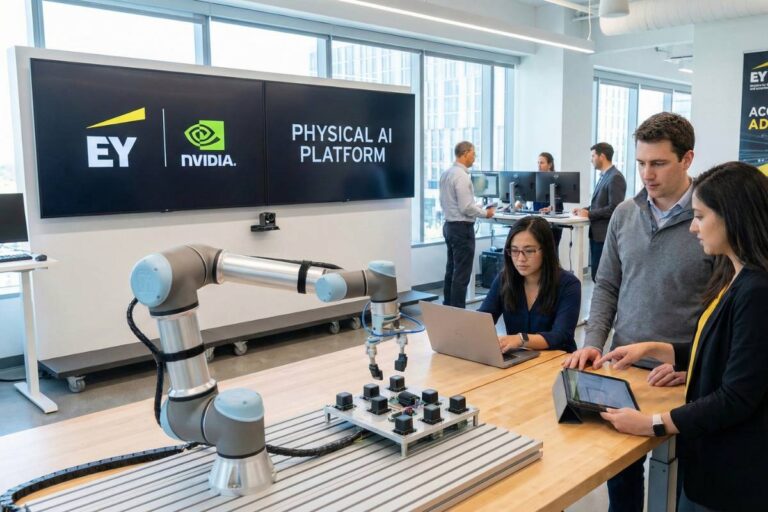The long-running argument between gaming laptops and desktops has changed a lot. Desktops used to offer better performance for the money, but the gap has gotten a lot smaller, even though it hasn’t completely gone away.
Performance: Trade-offs Between Raw Power and Portability
Benefits of Desktop Gaming Performance
Gaming desktops still have a big performance edge, especially at higher levels. Desktop setups are 15–25% faster than laptops with similar specs, mostly because they handle heat better. With high-end hardware, the difference in performance becomes even bigger.
At 1440p resolution, an RTX 4090 desktop graphics card does 49% better than a laptop graphics card with the same name in 23 games. This huge difference is due to the fact that mobile hardware has limited power and thermal capabilities.
But the performance gap gets smaller with lower-end GPUs. The desktop RTX 4060 is only 6% faster than the laptop RTX 4060. This makes mid-range gaming laptops more competitive.
A Look at the Real World Performance of Laptops
Gaming laptops these days are not slow. A high-end gaming laptop works about the same as an RTX 3090 desktop card and is only a little less powerful than an RTX 4070 Ti. This is pretty impressive given how small it is. The RTX 4070 Ti desktop card is as good as or better than the RTX 4090 175W laptop GPU.
In 2024, gaming laptops have reached new heights. The NVIDIA RTX 4000 laptop series and Intel HX processors, for example, can run AAA games at very high frame rates. Most new gaming laptops can handle 1080p gaming without any problems on popular games.
Cost Analysis: Looking at the Numbers
Comparison of Initial Investments
The prices of things are changing in surprising ways. The RTX 4060 parts for both mobile and desktop computers work the same way, but desktop builds usually cost a lot more when you add up all the parts.
You can get a good RTX 4060 gaming laptop with a 12th-gen Intel processor for between ₹70,000 and ₹80,000. The RTX 4060 desktop card costs between ₹55,000 and ₹60,000, and processors that are the same cost ₹30,000 or more.
There are good choices for people on a budget. The Acer Nitro 16 with RTX 4050 graphics starts at about ₹89,500. When looking for a desktop in the same price range, you often have to give up some parts to stay within your budget.
Total Cost of Ownership
Desktop computers need extra parts like:
- Monitor
- Keyboard
- Mouse
- Speakers
A good gaming monitor costs between ₹25,000 and ₹45,000. Gaming laptops come with built-in displays, keyboards, and audio, which could make them a better deal for people who are buying their first laptop.
Desktops, on the other hand, are better at being flexible with their parts. Builders can plan their budgets wisely by spending more on a powerful CPU and GPU and less on cases or power supplies.
Economics of the Upgrade Path
Benefits of Upgrading Your Desktop
Desktops are the best when it comes to upgrades. Users can easily change out their:
- Processors
- Graphics cards
- Memory
- Storage
This method of upgrading in small steps protects long-term investments. You start with a basic setup and add more parts as your budget allows.
When new games and technologies come out, people who own desktops just upgrade the parts they need instead of getting new computers. This flexibility can lead to better long-term value, even though the initial costs are higher.
Few Choices for Laptop Upgrades
Most of the time, you can only upgrade the following on gaming laptops:
- RAM
- Storage
- WiFi cards
The processors and graphics cards stay in place all the time. Thermal management usually gets worse after 2–3 years, so you need to hire a professional to fix it or replace the thermal paste.
Some companies won’t honor warranties if users make upgrades themselves, which makes it harder to decide how to maintain the device. Adding RAM (about ₹5,000) and SSD storage (about ₹6,000) to a budget laptop for gaming could make it run a little better.
Managing Heat and Making Things Last Longer
Differences in Cooling Systems
Gaming desktops have better cooling systems with:
- Bigger fans
- Better ways to get rid of heat
- More space for airflow
They help keep the system from slowing down during long gaming sessions by managing heat better.
Efficient cooling systems help desktops last longer and stay in good shape by keeping them running smoothly and consistently for years of heavy use. Under the same amount of work, desktop computers usually make less noise than laptops.
Problems with Laptop Heat
Gaming laptops have built-in problems with heat. Compact designs limit airflow, which can cause performance to slow down when you’re playing a lot of games. High-performance laptops often need loud fans to keep their temperatures in check, which can be a problem for noise.
Thermal problems can be deal-breakers; some laptops get too hot to play games on within 30 minutes, which makes them much less powerful. These problems get worse in the summer, especially when it comes to long-term gaming performance.
Analysis of Market Segment Value
Gaming on a Budget (₹50,000–₹80,000)
Gaming laptops in the budget range are getting better and better value. Complete systems with RTX 4050 graphics cards offer good gaming at 1080p. In this price range, desktop builds often have to make big compromises or use old parts to match the performance of laptops.
Popular budget options include:
- ASUS TUF Gaming A15 (₹63,377)
- Acer Aspire 7 (₹49,999)
These come with everything you need for gaming. To get the same performance on a desktop, you have to choose your parts carefully, and peripherals don’t count.
Gaming in the Middle Range (₹80,000–₹150,000)
The mid-range segment has some good and some bad results. Laptops with RTX 4060 and RTX 4070 graphics cards work great at 1080p and okay at 1440p. Desktop builds have better cooling and more ways to upgrade, which gives them an edge.
RTX 4080 laptops cost between ₹150,000 and ₹160,000 and are 50% faster than RTX 4070 laptops. But a lot of budget RTX 4080 laptops have 1080p displays that aren’t very good, which is a waste of the GPU’s power.
Gaming at a High Level (₹150,000+)
Desktops are once again the most valuable in premium gaming. With high-end hardware, the performance gap gets much bigger. The desktop RTX 4080 and RTX 4090 cards are much better than the laptop versions.
High-end gaming laptops like the Razer Blade 18 cost more than ₹240,000, but they can’t match the performance of desktops at the same price. But they are built to last and are easy to carry around for people who need to move around.
Things to Think About for Use Cases
Benefits of Desktop
Desktops are great for:
- Serious gamers
- Content creators
- People who want the best performance for their money
They’re great for competitive gaming, where every frame counts and keeping cool is very important.
Desktop computers can handle more than just gaming. They can handle multiple monitor setups, large storage arrays, and professional workflows. They run quietly when doing light tasks, which is important in shared living spaces.
Pros of Laptops
Students, professionals, and people who travel a lot will love how portable gaming laptops are. They let you play games anywhere you have power, like in:
- Dorms
- Offices
- Vacation destinations
When the battery is charged, you can play light games and do work without having to plug it in all the time. People who need both gaming and business features in one device will find laptops appealing because they can do both.
Things to Think About for the Future
How Technology Changes Affect
The requirements for gaming are changing quickly all the time. Desktop users can gradually upgrade their systems to meet new needs, but laptop users usually need to buy a whole new system every three to four years.
Ray tracing, 4K gaming, and VR technologies work better on desktop computers because they have:
- Better cooling
- Superior power delivery
- More thermal headroom
In these tough situations, laptops have a hard time playing games at a high level for a long time.
How Long Do Parts Last?
Because they manage heat better, desktop parts usually last longer than laptop parts. In well-cooled desktop environments, graphics cards, processors, and storage devices work at their best for longer.
As thermal paste breaks down and dust builds up in cooling systems, laptops get slower over time. To keep the original performance levels, professional maintenance is needed.
Ultimately, the choice between gaming laptops and desktops comes down to what each person values and how they use their computer. Desktops still have the edge when it comes to pure performance per rupee, especially when it comes to high-end setups and long-term value. Gaming laptops, on the other hand, are a great value for people on a budget and are the most convenient for people who are always on the go. When making this important gaming investment choice, think about how much space you have, what upgrades you want, and how mobile you need to be.
















